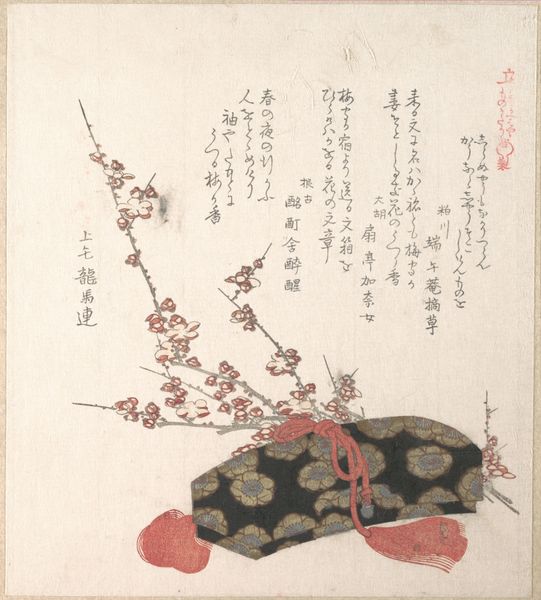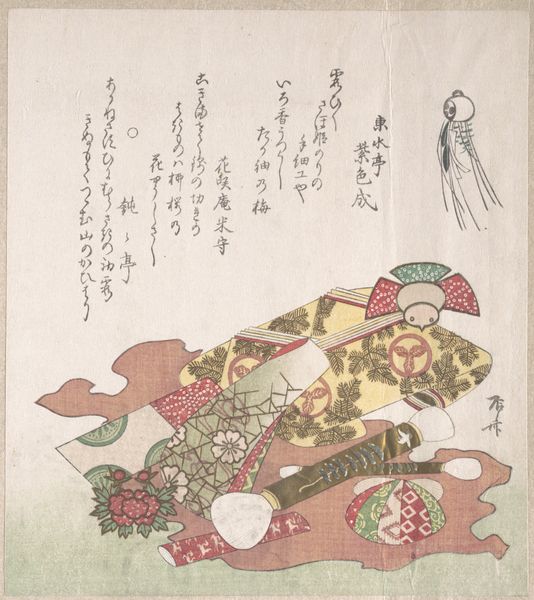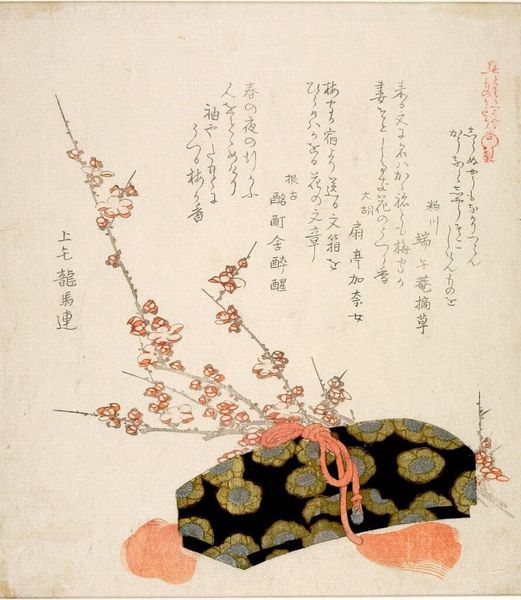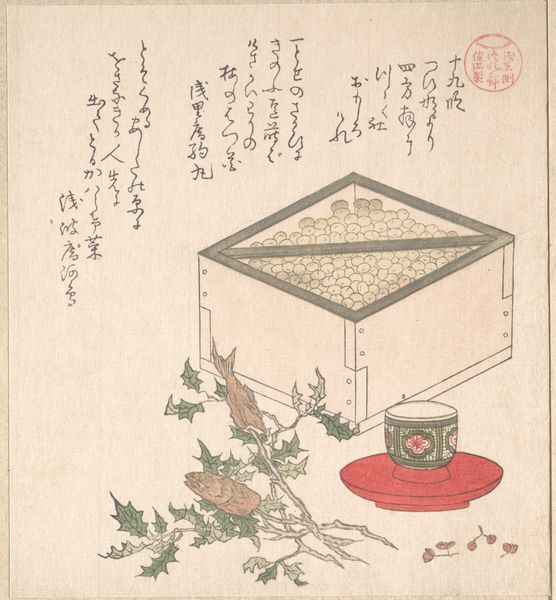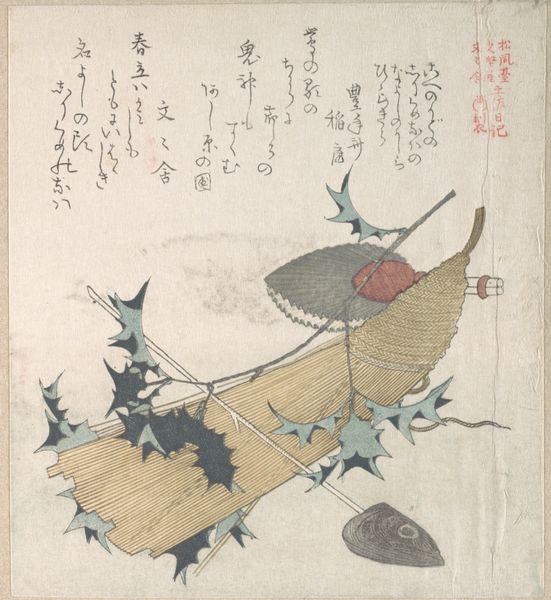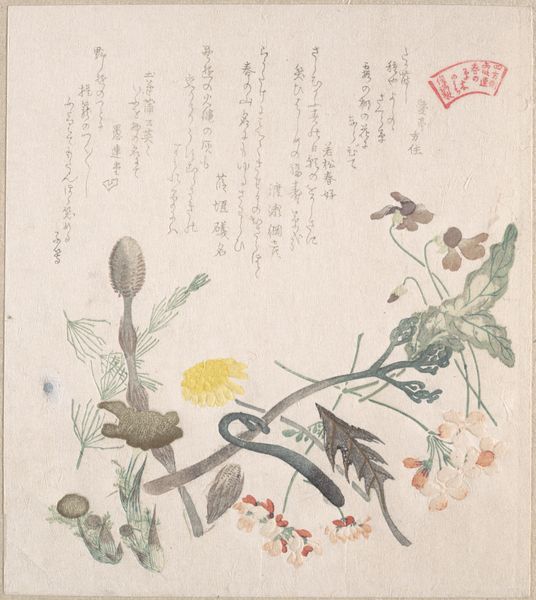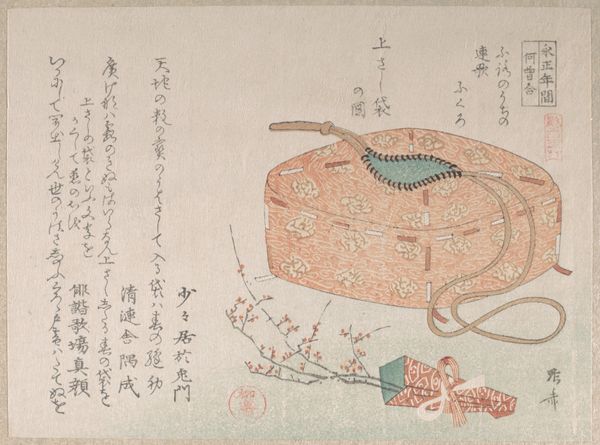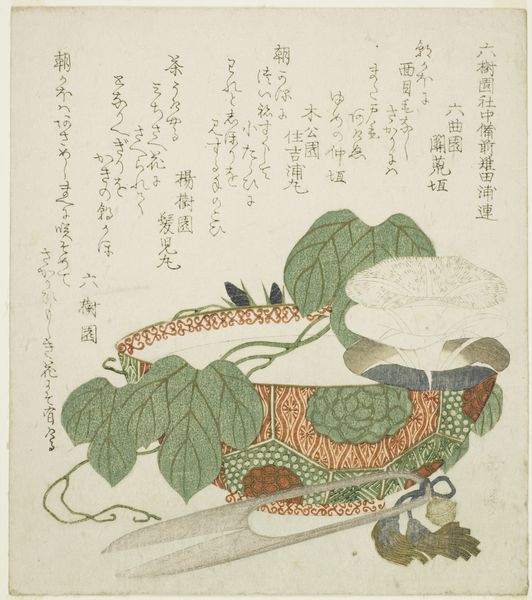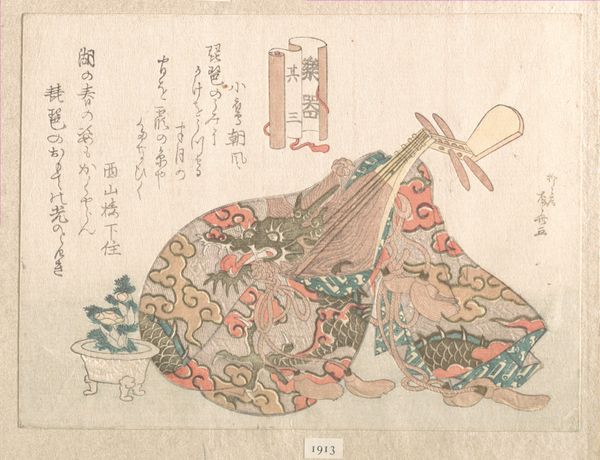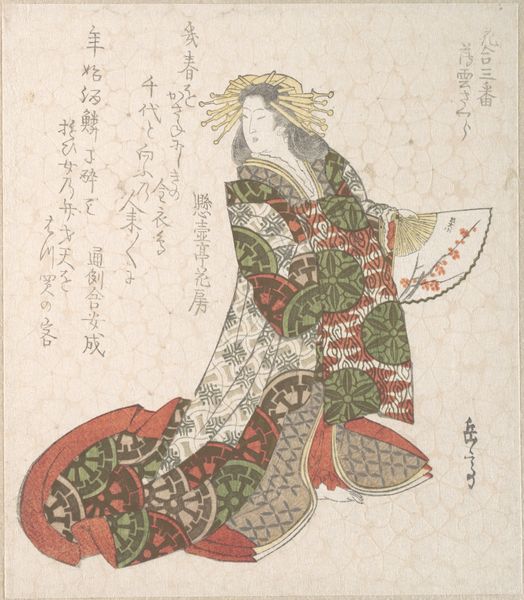
painting, print, textile, watercolor
#
water colours
#
narrative-art
#
painting
# print
#
asian-art
#
textile
#
ukiyo-e
#
watercolor
Dimensions: 8 1/4 x 5 3/8 in. (21 x 13.7 cm)
Copyright: Public Domain
Editor: Here we have Kubo Shunman’s “White Rat and Bundles of Cloth,” made around 1816. It's a delicate watercolor print that feels both whimsical and deeply symbolic. I'm particularly drawn to the contrast between the intricate patterns of the cloth and the simple, almost cartoonish depiction of the rat. How do you interpret this work, considering its cultural context? Curator: That’s a great observation! To truly unpack this ukiyo-e print, we need to think about its function and intended audience, but also, beyond its aesthetic appeal. While the playful imagery draws the eye, consider how images of rats, particularly white rats, were loaded symbols in Edo-period Japan. Think about rats often being associated with Daikoku, one of the seven gods of fortune and prosperity, and that is closely connected to the rice bales and the bundles of cloth we see here. But rats also had a more subversive edge, linked to the lower classes and those outside the established order. How do you think this tension plays out in the work? Editor: So, it's not just a cute image; it’s tapping into anxieties and hopes tied to class and wealth. It makes me wonder if the choice of a white rat, specifically, carries another layer of meaning. Maybe it’s a commentary on purity, or even a critique of the wealthy elite? Curator: Precisely. White was often associated with purity and divinity. Now, add the bundles of cloth—textiles—another prominent visual element. These were commodities of value, imbued with layers of socio-economic significance, produced by skilled (and often underpaid) laborers. So what if we consider the symbolism within the economic and labor realities of the time? Does that offer a new perspective? Editor: Absolutely. It becomes less about just luck and fortune and more about the system that produces wealth, and the potential exploitation that goes with it. It highlights not just what’s depicted, but also what's intentionally obscured or left out of the image. Curator: I'm so glad we discussed it from this lens. Hopefully it allows listeners to consider the painting as more than just a pretty picture. Editor: I agree. I’ll definitely see ukiyo-e in a different light moving forward.
Comments
No comments
Be the first to comment and join the conversation on the ultimate creative platform.
